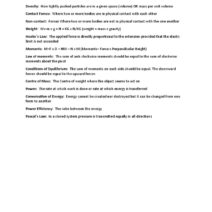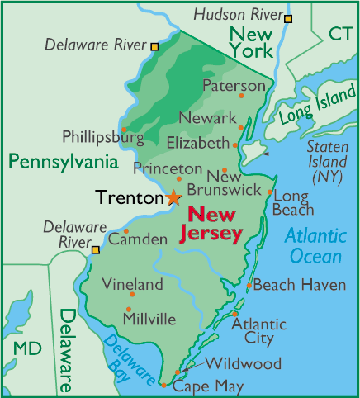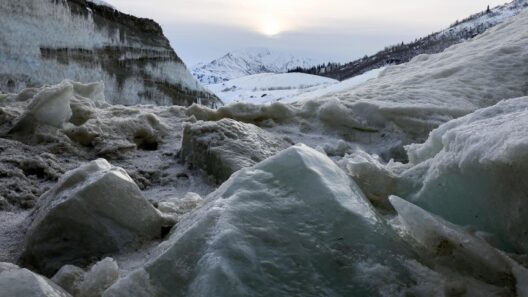Invasive species have long disturbed ecological harmony, but the accelerating pace of global warming is amplifying this predicament. As temperatures rise and weather patterns shift, ecosystems find themselves grappling with unprecedented changes. This intricate interplay between climate change and invasive organisms is transforming our planet’s ecological landscape, demanding urgent attention and action.
To appreciate the severity of the situation, one must first understand what constitutes an invasive species. These are non-native organisms that, when introduced to new environments, proliferate and disrupt local ecosystems. They often outcompete native species for resources, leading to declines in biodiversity, and can even extirpate native flora and fauna entirely. Examples like the zebra mussel in North America and the cane toad in Australia illustrate the devastating impacts that invasive species can have when unregulated.
Now, let us juxtapose this with the phenomenon of global warming. The earth’s average surface temperature has increased markedly over the past century due to human activities, primarily the burning of fossil fuels, deforestation, and industrial processes. This rise in temperature is not merely a statistic; it precipitates tangible ecological shifts. Increasing temperatures contribute to altered habitats and ecosystems, creating favorable conditions for invasive species to flourish, which, in turn, exacerbates the threats to biodiversity.
Consider the case of the common rabits in Australia. Introduced in the 19th century for sport, their population exploded in the absence of natural predators. Climate change further facilitated their spread, allowing them to invade areas that were previously inhospitable. As a result, they decimate crops and outcompete native species for crucial resources. This is not an isolated incident; it serves as a harbinger of what is to come as global temperatures continue to rise.
Marine ecosystems are not exempt from the invasions wrought by climate change. Warmer ocean temperatures and rising sea levels create ideal conditions for invasive marine species. For instance, the lionfish, native to the Pacific and Indian Oceans, has established itself in the Caribbean and the Atlantic, wreaking havoc on local fish communities. Research indicates that the lionfish thrives in warmer waters, underscoring a troubling reality: as ocean temperatures continue to rise, the potential for invasive marine species to expand their territory grows exponentially.
Moreover, the migration of invasive species is not merely about territorial expansion; it is also about timing. Global warming alters migratory patterns, leading to mismatches in the timing of seasonal events for native species. For example, warmer winters can cause non-native plants to flower earlier than their native counterparts. This can lead to competition for pollinators, which affects the reproductive success of native plants and can cascade through the food web.
Effects of global warming also manifest through altered precipitation patterns. Intense storms, prolonged droughts, and unpredictable rainfall create stressors that native species may not withstand. In contrast, invasive species often possess traits that make them more adaptable to fluctuating conditions. The result is a lopsided competition where invasive species, better suited to exploit these changes, establish dominance.
This invasive march is not contained to terrestrial or marine environments; freshwater ecosystems are also under siege. As global temperatures rise, the habitats of many freshwater species are being altered, and invasive species can exploit these changes. For instance, the northern snakehead, an aggressive and predatory fish native to Asia, has been spreading through American waterways, threatening local fish populations and disrupting aquatic ecosystems.
In a broader ecological context, the ramifications of invasive species extended beyond biodiversity loss. They can disrupt ecosystem services—benefits that natural environments provide to humanity, such as clean water, pollination of crops, and carbon sequestration. The presence of invasive species can compromise these services, leading to detrimental impacts on agricultural productivity, water quality, and carbon sinks. In turn, these effects can exacerbate the challenges posed by climate change, creating a vicious cycle that is difficult to break.
The threat posed by invasive species is thus inextricably linked to climate change. As the planet continues to warm, monitoring and managing invasive species become critical components of ecological conservation strategies. Effective legislation, public awareness programs, and research initiatives must align to address this dual threat. Moreover, integrating invasive species management with climate adaptation strategies can bolster ecosystem resilience and enhance biodiversity recovery efforts.
Interestingly, while invasive species pose a significant threat, they can also serve as indicators of environmental change. The presence of certain invasive species may signify underlying ecological stress or degradation. This information can be harnessed for conservation purposes, allowing for targeted interventions to restore balance in affected ecosystems.
Looking forward, a paradigm shift is required—one that prioritizes proactive measures against invasive species while acknowledging the exacerbating role of climate change. Investing in research and fostering collaboration among scientists, policymakers, and local communities can empower societies to combat these ecological threats. In this regard, education plays a crucial role; raising awareness about the impacts of invasive species can mobilize grassroots efforts to protect local ecosystems from the invasive march that threatens their very existence.
It is imperative that we recognize the profound interconnectedness of climate change and invasive species. As stewards of this planet, we carry the responsibility to safeguard the rich tapestry of biodiversity that sustains life. The pathways to resilience lie in understanding these ecological dynamics and acting decisively before the march of invasive species carries us further from a harmonious coexistence with our environment.








